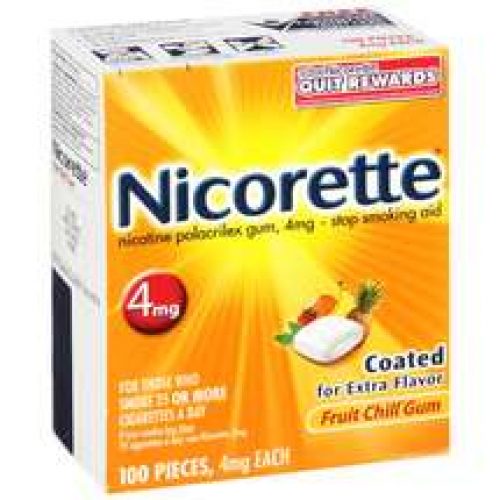Market Research: What’s Real?
I was just reading an article in the NY Times from this past week, that HULU, a fairly new video-streaming company with high-falutin’ investors like ABC/Disney, can’t decide if they have 9 million viewers or 42 million viewers watching network shows on their website.
Nielsen, the ubiquitous research agency, says 9mm. Hulu doesn’t like it. Advertisers are steering clear because Nielsen is a trusted name. A brand, if you will. They have other research agencies, too.
The ‘research thing’ in tobacco/consumer goods is the bane of any market manager. Most consumer goods companies default to Nielsen because, as a 3rd party source of data, its information can be foisted upon senior management, and hence, shareholders, as real, because the ‘Nielsen’ name carries weight in the wider world. In Sweden, Nielsen boasted that their research is linked to the data from chains’ retail tills. And yet, when I reported snus sales to London, Nielsen’s data was consistently 50% of our net monthly sales after returns.
Why is this? Sweden is very much a ‘corner shop’ market. These corner shops are run by Iraqis, Iranians and Assyrians, and much of their business is done in cash. Their registers are not ‘connected’ to Nielsen. So they are not covered.
Consumer Goods companies, just like HULU, are forced to find other research companies, or buy short-term independent store surveys from smaller research firms with feet on the ground.. In Sweden, the tax authorities provided company excise tax paid into the public domain, so my company (Gallaher) was able to use Nielsen’s portion-to-loose ratio (snus is taxed by weight), our own real net sales data and tax paid to come up with a ‘sort of’ real share. It took London HQ a while to buy it.
When I interviewed Nielsen in Russia in 1999, the market was a massive morass of outdoor wholesale markets and chaotic retailers, all working with cash, and many with abacuses instead of cash registers. Cigarette consumers used these markets to buy in bulk at a discount. Nielsen said “sorry we cannot cover these open markets.” Most majors then went to “Business Analytica,” a local company with an army of its own agents who covered shops and markets across 12 time zones, and eventually went to 60 cities. When Gallaher was looking to buy “Liggett-Ducat,” one question was “where’s the Nielsen data?” And “Who the hell is Business Analytica?” BA’s data was also not airtight, but they understood the fragmented marketed, and worked hard to build a reputation with people on the ground, now in several markets, which exists to this day.
In Poland, all producers used wholesaler sales-in data by subscribing to a specific service which collected it. Once again, it was to compensate for Neilsen’s poor data from purely virtual polling of supermarkets in a market of corner-shops and open markets. 40,000 outlets overall.
Nielsen and its ilk also offer ‘qualitative’ research which leads companies to weigh consumer reaction to the release of new products, or extensions of old ones.
If I had been in charge of the “New Coke” launch in 1985, when it failed, my fallback would have been the quality of the research and not my own incompetence. In snus, the research in Scandinavia must be mixed with common sense and experience. The bulk of the information Gallaher polled via 3rd parties was useless, but the Brand Managers could always cite the research when new products failed. Research that was paid for, and sucked money out of other products’ budgets. In reality, the fault was not with Nielsen here as a facilitator, but of the manager, who does not understand his/her consumer base, or even the company culture which relies on research 100% for its launch decisions.
The launch of “LD,” a cigarette brand now owned by JTI and available in 30 countries, and which once topped the Russian market (2001), is a business case of how company knowledge trumps research. It tested poorly in 1998 as a “cheap version of L&M” and skewed feminine. Russia was reeling from a crippling financial crisis,  and many were dumping devaluing rubles into goods. Cigarette segmentation had collapsed, and former Marlboro smokers were now smoking old local brands, which is what our Moscow factory (Liggett-Ducat, American owned at the time) produced. Management surmised that a Western-style brand with a simple design, a good American blend, and a low price, would sell as Russia recovers. The research looked at it without any consideration of what the country was going through at the time. Fail. But the research was all style and no substance.
and many were dumping devaluing rubles into goods. Cigarette segmentation had collapsed, and former Marlboro smokers were now smoking old local brands, which is what our Moscow factory (Liggett-Ducat, American owned at the time) produced. Management surmised that a Western-style brand with a simple design, a good American blend, and a low price, would sell as Russia recovers. The research looked at it without any consideration of what the country was going through at the time. Fail. But the research was all style and no substance.
It was launched anyway, and when Gallaher purchased Liggett-Ducat in 2000, new machines were brought in at warp speed to keep up with explosive demand in the market. “LD” exploded regardless of research. Gallaher, bless their hearts, took a while to understand it as well. With JTI’s purchase, it is now strategic for them as a value-segment brand around the world.
As a snus, LD was launched without testing in Sweden, but with a well-tested blend, a white can, a low price, and a management team who knew it would work. And it did, amazingly, for awhile. Now, it’s still there, and has a place as part of JTI’s growing quality portfolio.
What’s the moral of the story? For management, it’s get out of the office and meet your consumers on the street, in the market. If you watch a consumer buying your product, even if you are a CEO, ask her why she bought it, and ask her what she thinks, and what can be improved. I once had a Moscow cab driver complain to me about ‘end fallout’ from his LD GOLD cigarettes which was handled at the highest levels at the factory the next day with the participation of the Italian machine manufacturer and R&D in Northern Ireland.. Master-cases were ripped open, and action taken.
It’s difficult, and having a 3rd party homogenize and pasteurize sales and consumer data gives the executive more time to sit in an office, read reports, and attend meetings. Also, the 3rd parties can absorb the guilt of a wrong decision based on their research in front of your shareholders.
ALWAYS question the data, and, always poll your sales force for data from points of sale. Ask them questions. Look at 3rd party sales data for trends and qualitative data, but get out of the office and see for yourself.
One of my favorite examples is “STAR TREK,” which Nielsen tracked poorly for Desilu Studios in 1966-7. It was canceled after two seasons, and then revived when many thousands of letters were received by the studio from an organized campaign. But it was then moved to Friday nights, when its young, male base were out and not able to watch it. Because of NBC management tracking Nielsen’s take on the show, it was canceled after its third year in 1968. It then exploded into a phenomenon in syndication, and 700 episodes and 11 feature films later (The 11th currently pushing $200m in ticket sales), It makes me laugh. A billion dollar franchise.
ANDREW ROMEO
Live from New York on SnusCENTRAL.org
About author
You might also like
Thank You for Chewing our Gum!
It’s well known that all big tobacco players are researching non-tobacco nicotine delivery systems. Gum and patch manufacturers, with their 12-week dependency regime products will soon have to compete with
WHATEVER HAPPENED TO SNUS IN THE USA?
If I recall, the cost of a mini-snus factory should not run over $3 million. That’s with standard primary and Mertz machines, plus re-wetting, and, the variable, refrigerated facilities for
Russia, Cigarettes & Snus: What Is To Be Done?
“What is to be Done?” is the title of at least two pre-Communist treatises, one written by Nikolai Chernyshevksy in 1861 (while in prison in St. Petersburg), which called on





